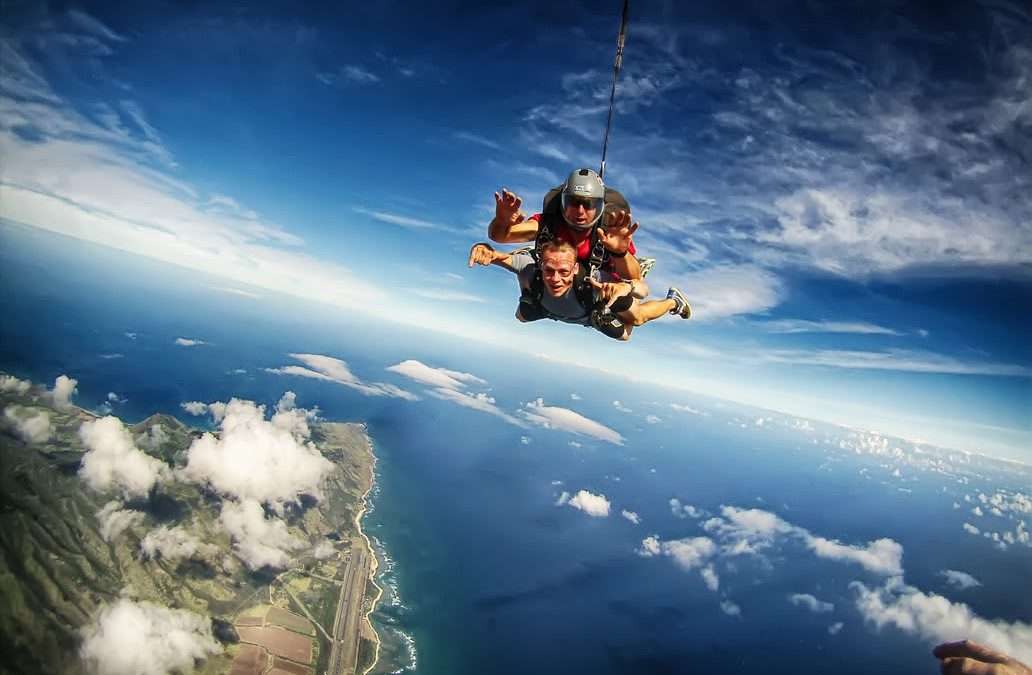The basics for skydiving safety you need to know before taking to the skies
For everyone who loves to skydive, safety is the absolute top priority. While we should all be mindful of safety precautions in every facet of our lives, when it comes to extreme sports, adhering to safety guidelines and protocols can significantly reduce the risk of injury or fatality. In this article, we’ve answered some of the most common questions asked about skydiving safety:
How safe is skydiving?
If you’re considering your first jump, you might be asking yourself whether skydiving is safe. The truth is that skydiving is an extreme sport, and like all extreme sports, it’s designed to test your physical and mental limits. Although extreme sports might be more daring than your average game of football or basketball, skydiving and activities like it are popular because they offer an adrenaline rush and sense of accomplishment unlike anything else.
The Australian Parachute Federation has been established for over 60 years and has been collecting records related to skydiving safety since its beginnings. The numbers show that skydiving is statistically safer than most extreme sports and that safety measures have only improved with time.
What’s the risk of fatality?
The most recent skydiving fatality rate reported by the APF is 1 in 100,000 jumps or 0.001%, which means statistically speaking, you’re at greater risk driving to work than during a skydive. In fact, you’re more likely to be hit by lightning than experiencing a malfunction during a skydive! Life is full of inherent risks, and the most important lesson is to therefore take measured, calculated steps to reduce your risk of harm.
In Australia, skydiving Drop Zone operators adhere to rigorous safety procedures, and students are encouraged to learn from instructors and ask plenty of questions before each and every jump. When you’re first learning to skydive, completing a tandem skydive with an experienced instructor will also help you to become more familiar with the sport.
How old do you have to be to skydive?
Skydiving age restrictions apply to protect both children and instructors. In Australia, the minimum age to skydive is 12 years old, provided the child has permission from a parent or legal guardian. Whilst there is no maximum cut-off age, there are certain health guidelines that may influence your ability to skydive.
If you have high blood pressure, diabetes, or other known medical conditions, speak with your doctor first, and then ensure you provide any relevant information to the skydiving company and instructor so everyone is aware and can take precautions. Medical professionals advise against skydiving whilst pregnant. Finally, it’s worth noting that maximum weight limits do apply to skydiving for safety reasons. The maximum weight to tandem skydive is typically 95- 100kg, but if you are learning to skydive you can weigh up to 110kg(speak to the drop zone when booking in for your training).
What should I wear while skydiving?
For your first few jumps, a full kit isn’t necessary. When tandem skydiving, wear comfortable, athletic and weather-appropriate clothing that will be not too bulky and loose for harnesses to fit around. However, when learning to skydive you will be provided with the appropriate jumpsuit, helmet, eyewear and skydiving equipment required for your training jumps.
A typical skydiving kit includes:
- Jumpsuit – designed to protect your body from the elements, such as cold air at high altitudes and assist you with flying your body during your jumps.
- Helmet – as with many other sports, helmets are used to protect your head from injury. Skydiving helmets are used to contain audible warning devices. There are both open face and full-face helmets(similar to motorcycle helmets).
- Goggles – are used to protect the eyes during your jump.
- Shoes – footwear should be comfortable and well-fitting to ensure they don’t come off in freefall and protect your feet during landings.
- Rig – a ‘rig’ is made up of 4 core elements, including the main canopy, reserve canopy, automatic activation device(AAD) and your harness/container system. The main canopy refers to your parachute. You will also have a backup parachute (the reserve) to deploy in the unlikely case of a malfunction or emergency.
Some Final Safety Tips
Your chosen skydiving drop zone operation and instructors will teach you how to safely enjoy skydiving. That said, safety is a shared responsibility and should be taken seriously. A few final notes on safe skydiving:
- Know and review your emergency procedures before every jump.
- Thoroughly check your equipment and rig before every jump.
- Always listen carefully to your instructor and follow their advice.
Enjoy the view! For more information on customised skydiving rigs, repacking and more, contact the friendly team at Downward Trend today. Phone 0400 011 331.
